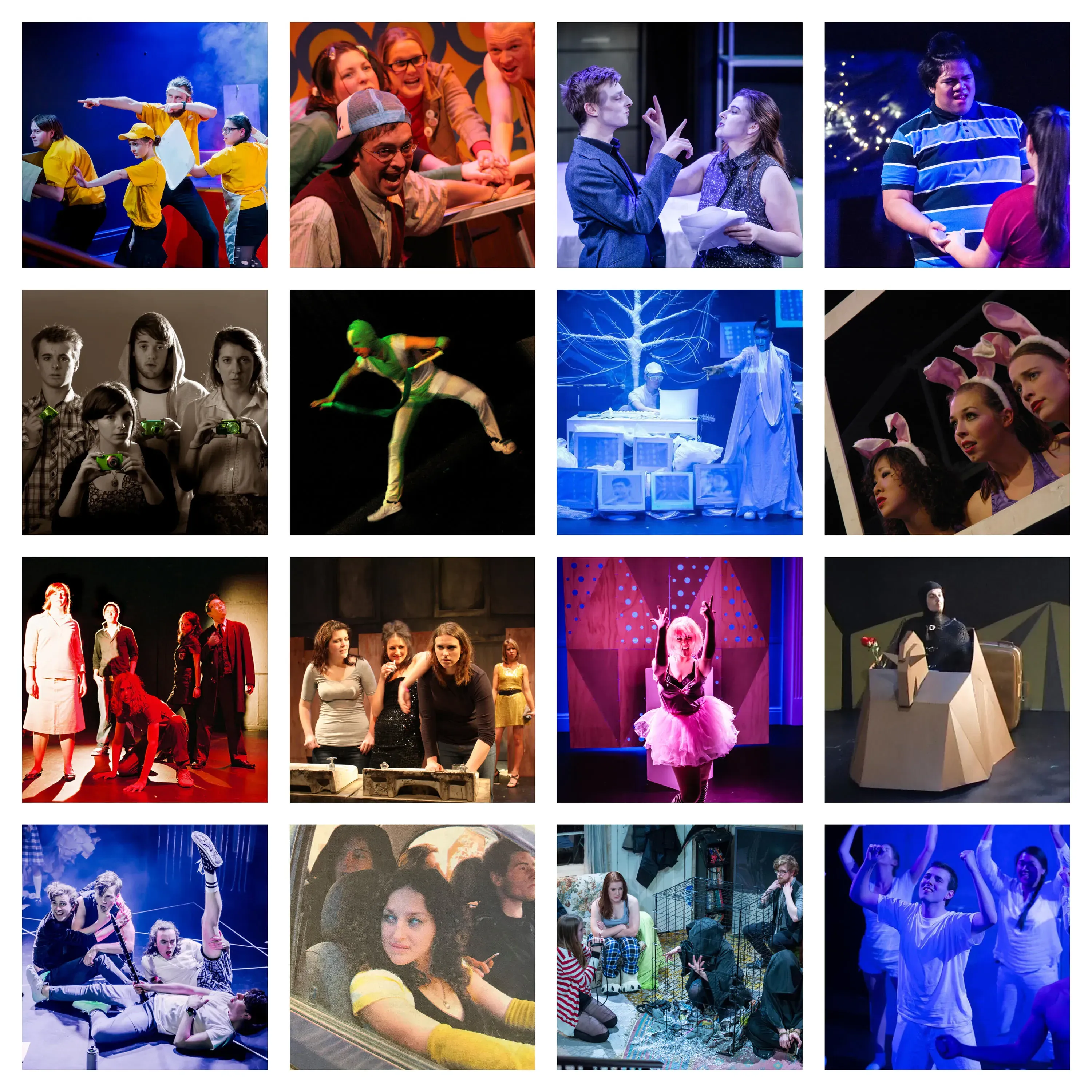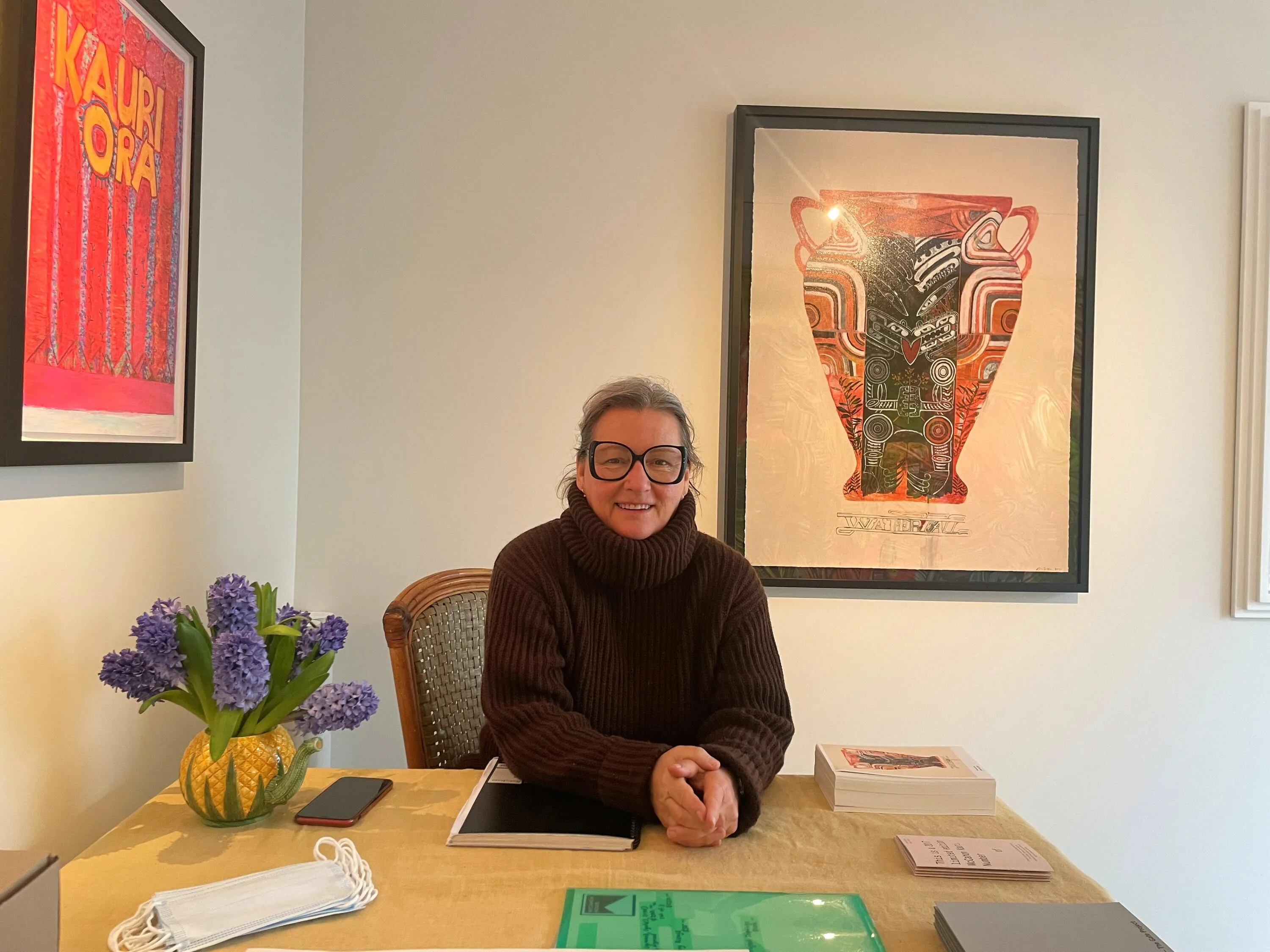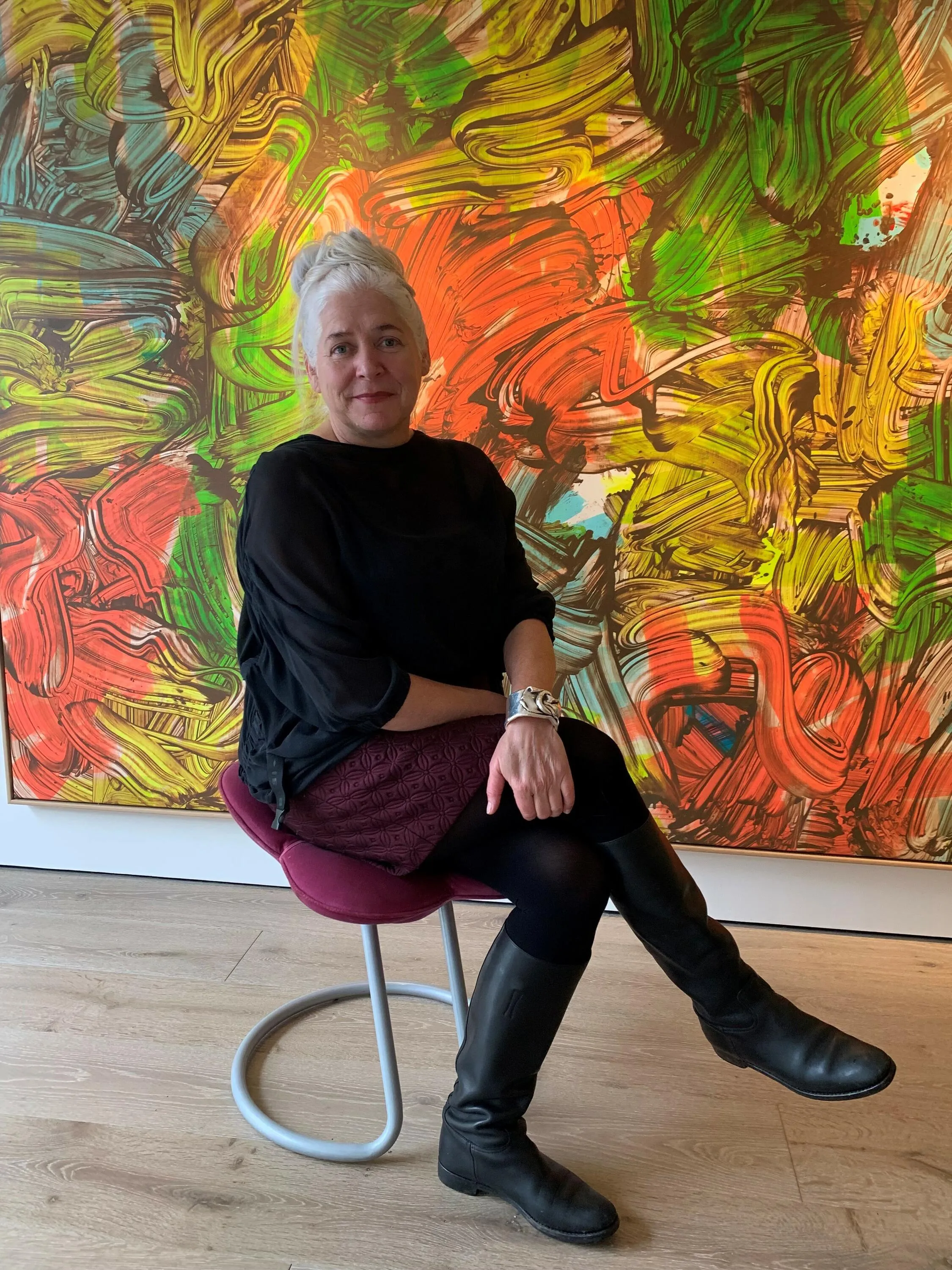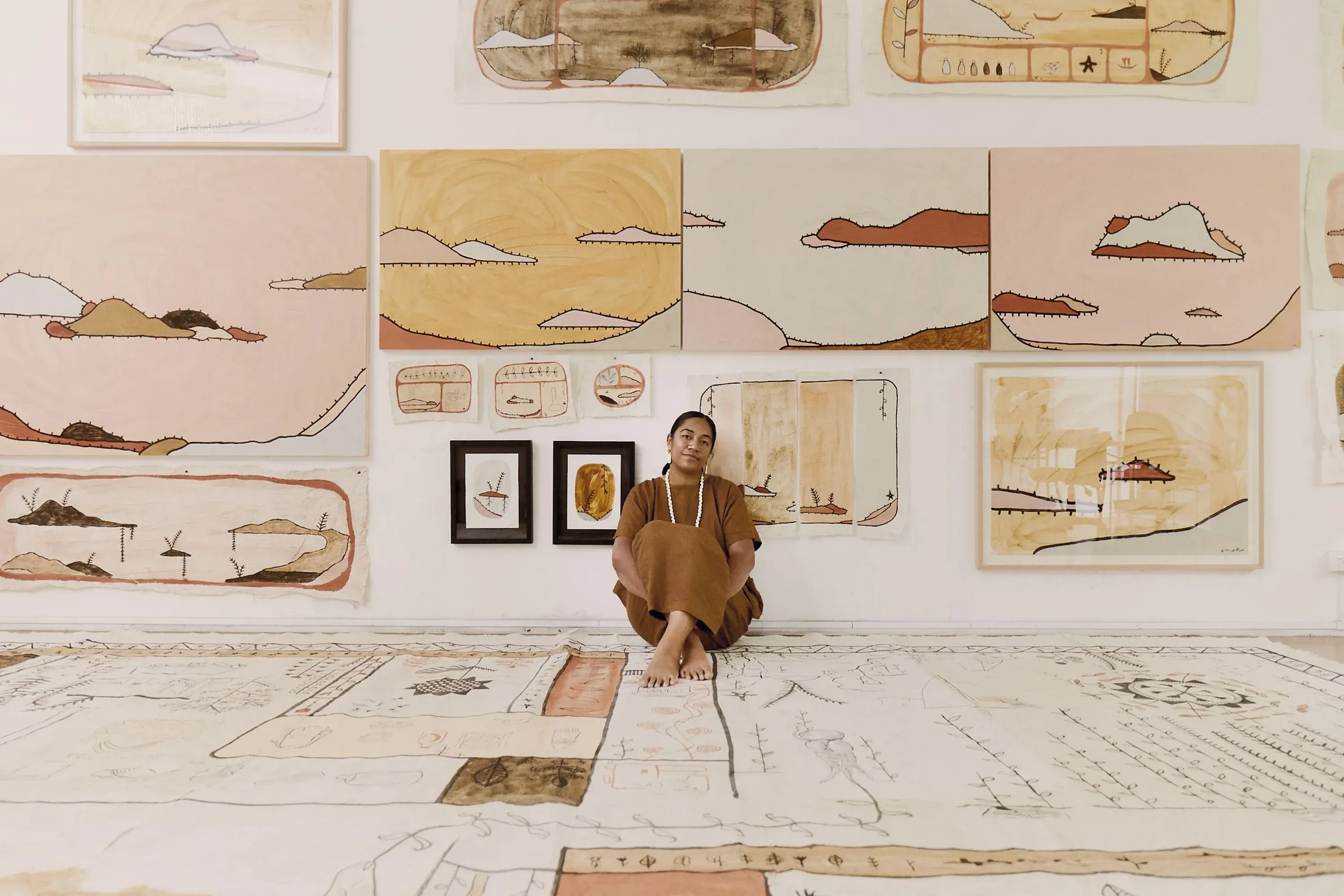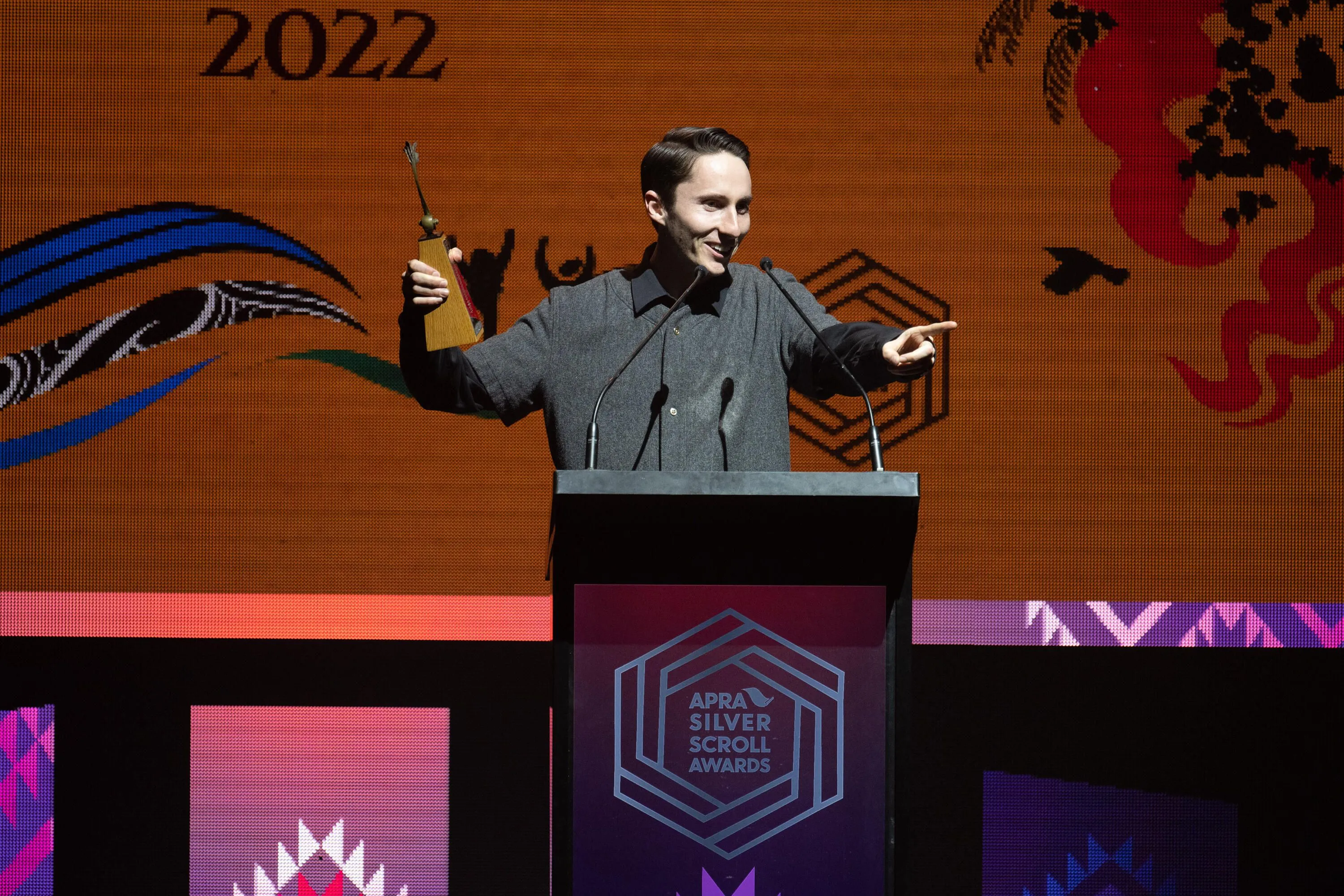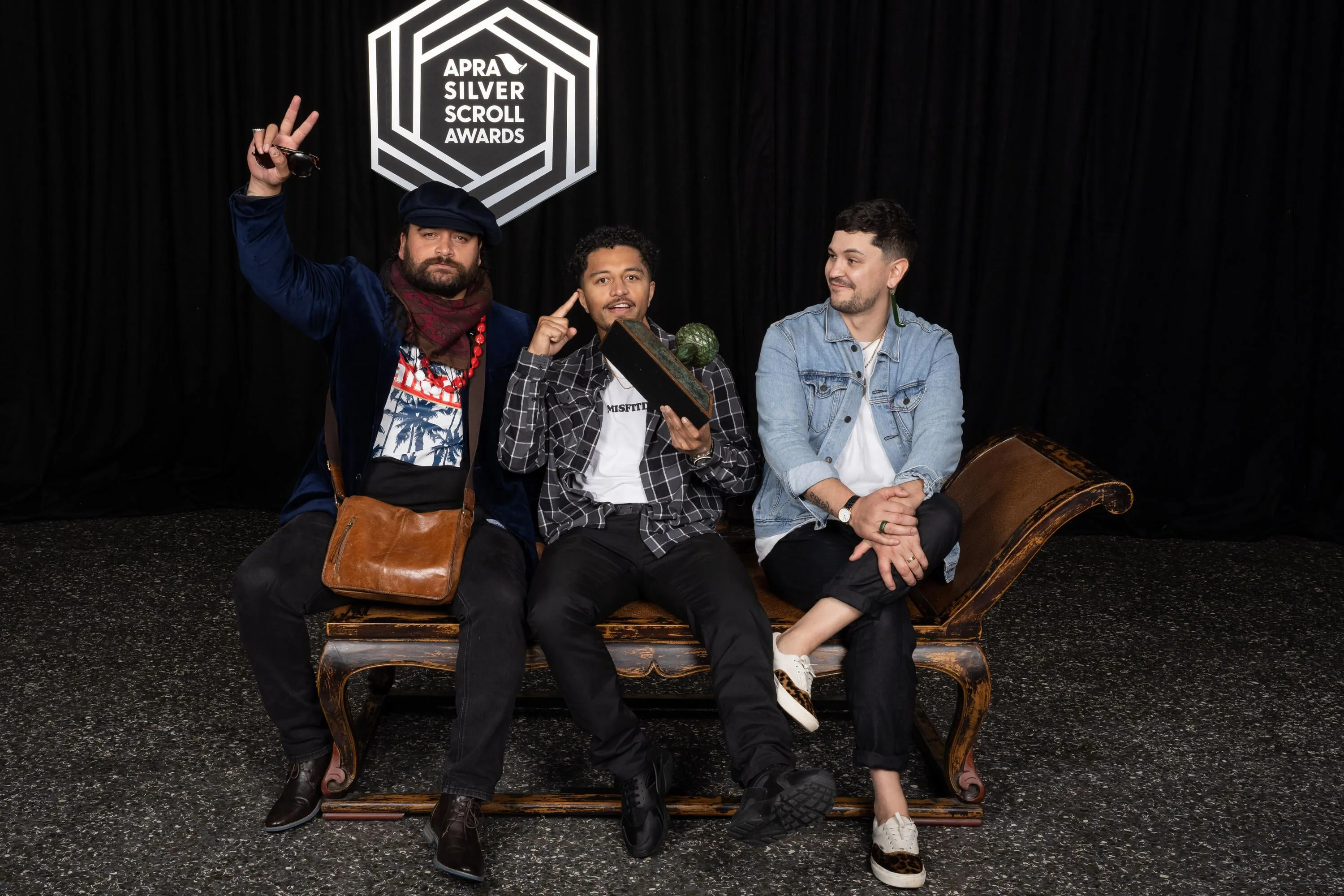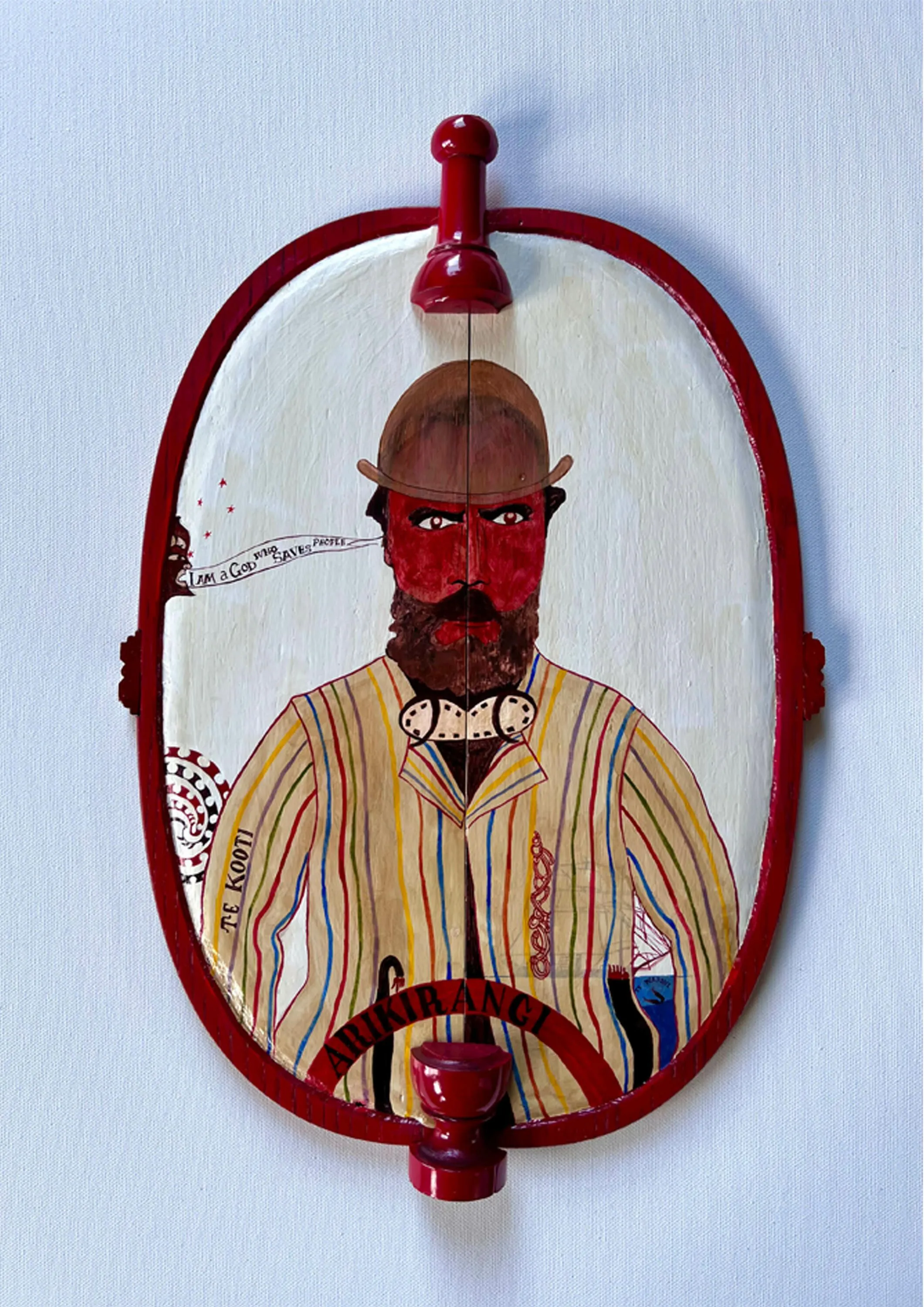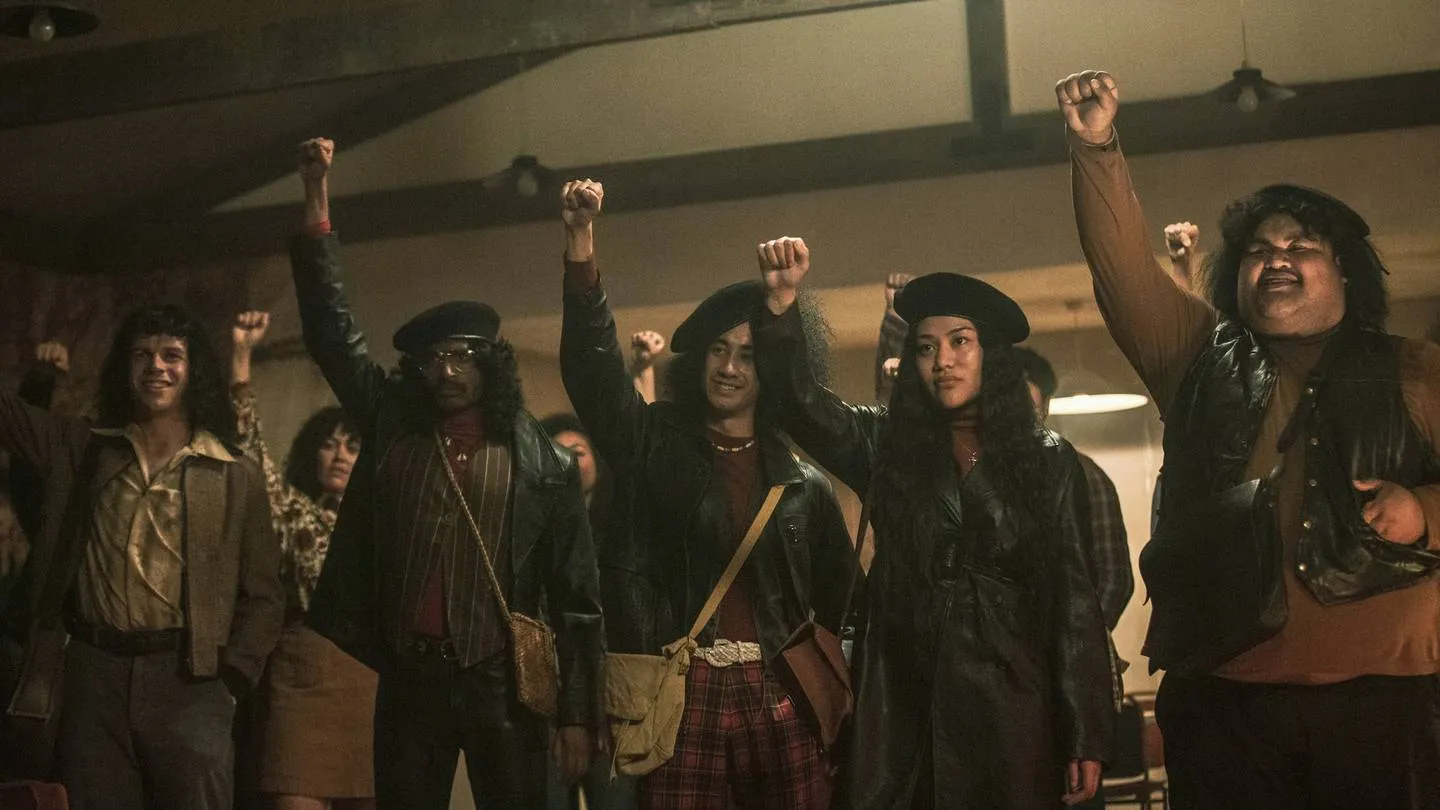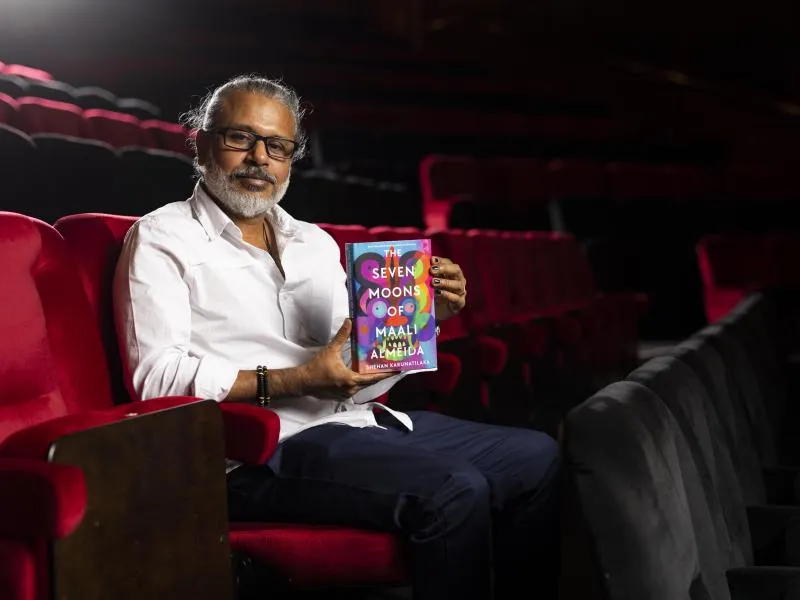Lowdown: Truth And Consequences Revealed
Written by
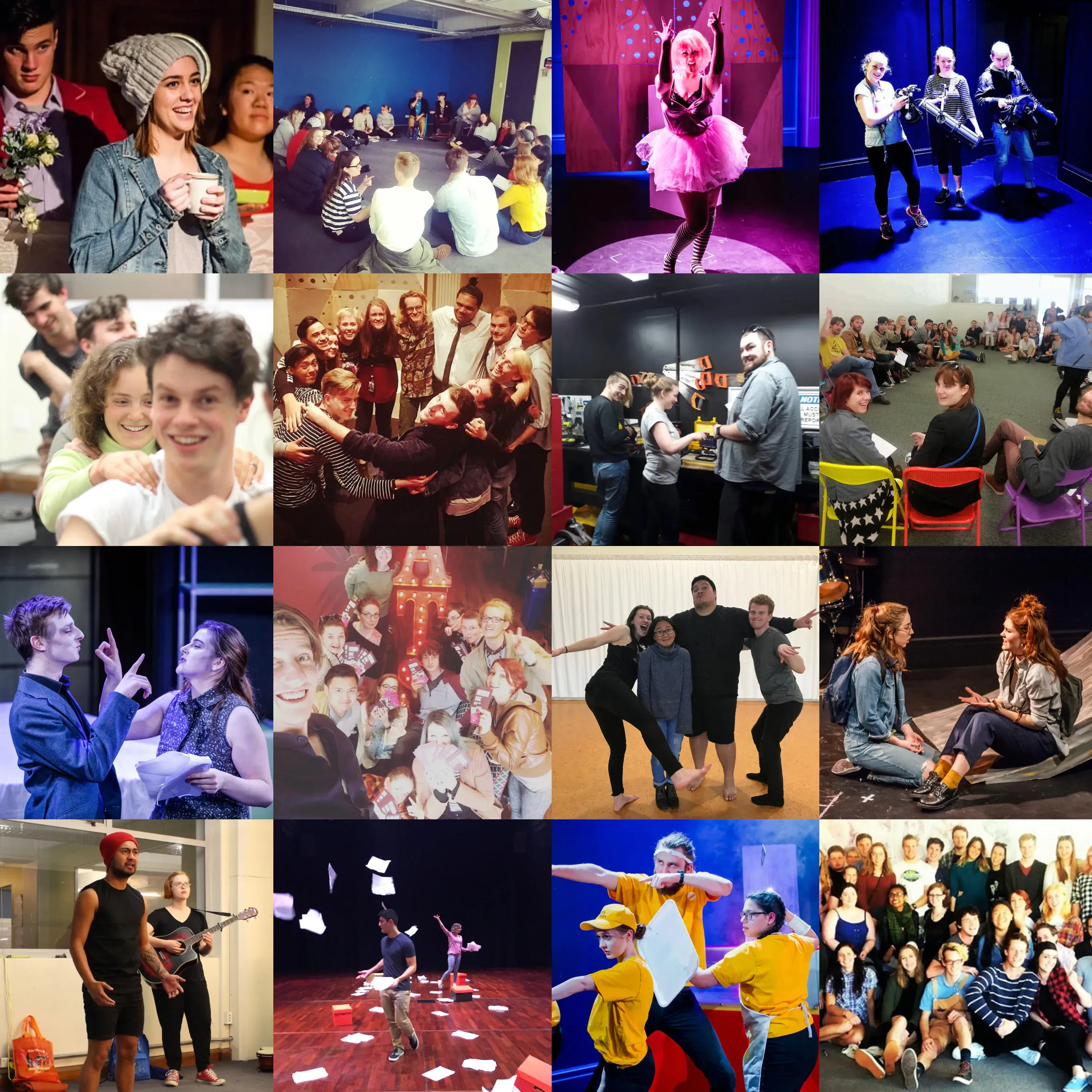
“For nothing can seem foul to those who win.”
William Shakespeare wrote these words some 530 years ago in King Henry IV, Part One - a story of power, honour and rebellion.
It’s certainly an appropriate reaction for the Shakespeare Globe Centre New Zealand (SGCNZ) and its vocal supporters after one the most extraordinary stories to come out of creative funding sagas in recent memory.
It has had all the twists and turns of a Shakespearean play - especially in the past week - but unlike many of the Bard’s most famous plays, it had a happy ending for those at the centre of it.
After being removed from Creative New Zealand’s (CNZ) three-year Toi Uru Kahikatea funding last month, SGCNZ have put together an extensive and committed campaign to raise awareness for their plight - making it into the major TV and online networks (not to mention international coverage) which led to pressure being put on the highest office in the land.
Not only was Prime Minister Jacinda Ardern asked about it on live TV, she is actually one of the many who have been through the SGCNZ Festival. Within barely more than 24 hours, the decision is made that the Ministry of Education will “provide some support to help them through their current financial difficulties” according to Minister Chris Hipkins.
Anything that sees arts and creativity promoted within the halls of education has to - in general - be seen as a positive. It’s wonderful news in that regard. There should be no begrudging the fact that SGCNZ will get support to continue making a difference there or that they fought their own corner.
But it cannot be confused here - this support was not to do with whether SCGNZ is able to deliver its festival. MoE has not “saved” the festival - it was going to carry on regardless of the loss of the $31,827 worth of annual funding over the last three years.
The money that was applied for - closer to $80,000 according to reports - was for an admin role, focussing on succession planning. Not the survival of the programme.
Now, any arts organisation should be entitled to want to build their organisation, have a structure that allows them to improve - do more, be better. There is absolutely nothing wrong with SCGNZ having that desire and to apply for funding.
Arts funding has always had plenty of grey areas - but this decision from the Government has created more of a grey continent.
If MoE is going to step in to help creative ventures that work within school curriculum or focus on students’ education and wellbeing - where does that stop?
There are countless creative practitioners, companies and organisations that are in desperate need for such support - just to be able to keep the lights on. As you’ll read later, that’s not always possible to do.
If SGCNZ deserves funding from outside of the CNZ/MCH sphere, then what else does?
Again, this isn’t a question of whether SGCNZ is worthy of funding support - which it is - this is more of a case that there are many in the creative community who equally deserve the same opportunity.
MoE, MCH and CNZ do a great job of putting together the Creatives in Schools programme. This week’s announcement will surely lead to more questions on how far this new crossover can go.
However, when much of the reaction that forces this decision comes from mainstream media headlines rather than a depth of reading, the bulk of the uproar can be broken into two parts.
One was that the non-funding call from CNZ was going to see the festival fall over and rob young New Zealanders of an incredible opportunity to compete nationally, grow their confidence and for the lucky few - get a chance to perform at the world famous Globe Theatre in London. This, as previously mentioned, is a little wide of the mark.
The other part - the criticism of CNZ’s funding model - is built much more on reality. There is no question the process has been challenged in sections of the creative community for some time.
It has definitely been the spring of the sector’s discontent and CNZ has unquestionably been in the firing line, almost constantly for the last month.
The intensity of the debate that has drawn in commentators from outside of that community, as Stuff’s Andre Chumko underlines, come from “Cherry-picked comments from CNZ’s external assessors.”
CNZ made what is an out of character decision to react extensively to the SGCNZ/MoE announcement (covered in detail here on The Big Idea). There are some sentences worth accentuating.
In a joint statement, CNZ Chief Executive Stephen Wainwright and Arts Council Chair Caren Rangi declared they’re pleased “the Government has recognised that the MoE is better placed to provide this funding.
“This highlights the positive impact that additional government investment can have on the arts.”
CNZ then go on to pose the question many others are thinking - what about everyone else?
“While it’s great that a solution has been found for this one organisation, questions remain about other arts organisations and individual artists who find it difficult to mobilise or who don’t have the international pulling power to draw attention to their funding needs.”
Filmmaker Dr Gabriel Reid commented on CNZ’s reaction - “It is the antithesis of transparency and insulting to applicants/practitioners for CNZ (and the NZ Film Commission) to engage anonymous assessors.
“Applicants have no right of reply. They don’t know the identity/credentials of those assessing their applications. They have no way of gauging the degree to which assessors are appropriate and qualified or hopelessly mismatched. This shabby practice must cease, immediately.”
While there is no place for the racist rhetoric that has seeped out in some places - nor the abuse of the frontline CNZ staff who have no say in the funding decisions or outcomes - there continues to be questions and calls for change from this.
Either way, the weight of bad publicity and public pressure has far outweighed the $31k per year of unsuccessful funding that sparked controversy for CNZ.
As Shakespeare wrote in Julius Caesar, “Cry ‘havoc!’ and let slip the dogs of war.” It may feel like someone has cried ‘havoc’ and pointed them in the direction of arts corridors of power.
Final curtain call
Far from the warm embrace of the mainstream media spotlight, without outraged onlookers or sensationalist headlines, there are confronting and heartbreaking decisions facing some well-tenured and influential creative organisations.
Auckland Pride Creative Director Nathan Joe, an impressive emerging arts leader, writes eloquently on the effects of defunding that has gained plenty of traction.
One that has been left with this stark reality is long-time contributor to the youth art scene, Young & Hungry (Y&H).

Collage of Young & Hungry Festivals over the years. Photo: Supplied.
LIke SGCNZ, they have taken the performing arts to schools around the country. They’ve also had a major impact by commissioning youth-focussed plays, providing a performance platform and building a network for budding creatives to make connections and work with professionals.
Working with partners like BATS Theatre and Playmarket, more than 2,000 young people (aged 15-25) have passed through their programmes. Many have gone on to forge successful careers in the performing arts, entertainment and events sector as performers, writers, managers, designers and technicians throughout the world. They include the likes of Taika Cohen (now usually known as Taika Waititi), Jackie van Beek, Briar Grace Smith, Jo Randerson, Pip Hall, Nigel Collins and Loren Horsley.
But as of today - Young & Hungry are no more. Exhausted and Starved - of resources and support.
Their impressive alumni cohort was not enough to save them - perhaps things might have been different if Jacinda Ardern had been in that list too?
In an email to their supporters, the Y&H Trust has sadly declared that after 29 years “Young & Hungry is taking its final curtain call.”
They explain “it has become apparent to the current Board that this iteration of the Trust is not working, and we are not achieving the charitable aims that it was set up with all those many years ago. As we have now completed our 2022 seasons, it is time to wind up Y&H.
“We are operating in an environment which requires us to seek funding from project to project. This limits our ability to provide long-term assured employment for our administrative staff.
“The Board is tied up with generating funding applications, and their associated reporting requirements.These factors doubled with the impacts of COVID, means that we are not reaching the audiences we need to reach, or provide live performance activities for our rangitahi to cut their teeth on.
“We have searched under every stone, climbed many unscalable mountains and survived endless planning meetings. However, we have not been able to find a way forward that does not compromise the Y&H values.”
Hilaire Carmody, Y&H Trust Chair told The Lowdown about how it got to this stage - a tale worth both funders and organisations currently struggling with funding to pay close attention to.
“We were moved off Toi Uru Kahikatea investment funding from CNZ three years ago. Without the support of ongoing organisational funding, we are unable to commit to long term planning, which has taken a toll on the organisation.
“This paired with our desire to move from an organisation that relied on good-will and favours, to an organisation that fairly remunerates the creatives involved, has put a strain on budgets and deliverables.
“Current wages and inflation outpace our ability to increase income. Especially for programmes where we wish to keep participation fees as low as possible.
“Ultimately these pressures have been too much to ensure long term sustainability and delivery of quality arts experiences.”
There are still plenty of Young and Hungry creatives out there, looking for those first steps on their career paths. There’s now one less opportunity to support them.
But this is an organisation bowing out gracefully. There are no cries of ‘poor us’ - they know there are many doing it tough right now.
This below paragraph is their last act after nearly three decades of giving - to advocate for those remaining.
“Our final message to all of you, is to please keep supporting our local performance institutes. Live performance is a delicate art form that needs audiences to live and breathe. It is an essential element of a flourishing society. Buying tickets and making donations ensure these places and groups survive, to be handed down to the next generation.”
Visual arts funding cut revealed
As is widely known by now, there were four organisations that lost their place in the CNZ Toi Uru Kahikatea funding group in last month’s announcement.
One of those that has kept quiet is McCahon House Trust - and is only breaking its silence today in The Lowdown.
Again, this is based on an understanding of the impact being felt like shockwaves throughout the creative community - not just on their doorstep.
They also wanted the opportunity for Chair Lisa Bates and Director Viv Stone to meet with CNZ powerbrokers Rangi and Wainwright about the decision not to continue funding the McCahon House Parehuia residency, in what Bates calls “a positive, future-focused meeting.”
They’ve walked away determined McCahon House won’t give up on its goals and aspirations - and haven’t closed the door on a future relationship.
Stone told The Lowdown “We’re as optimistic as we can be. Both Stephen and Caren acknowledged CNZ remain committed to a working relationship with McCahon House, and stated they are confident they will be partnering on other projects with us in the future.”
She muses “we would like to think that just because CNZ have dumped us in the short-term, it doesn’t mean they won’t want to get back together in the long-term. We’re convinced we offer unique and meaningful services to the Aotearoa New Zealand visual arts community, and we accept that there’s social changes that need to happen for hopefully better and healthier social and cultural equity."
Bates states “we support CNZ’s strategic vision to build a more resilient and dynamic arts sector by prioritising Māori and Pacific led organisations and even though we are definitely feeling some short-term pain, we get it.”
One thing brought up in the meeting was an alarming, but little-discussed, trend for visual arts funding.
Stone reveals that during the “robust discussion”, they outlined their concerns that “the visual arts is very much the poor cousin” when it comes to funding.

McCahon House Director Viv Stone, in front of Shane Cotton’s ‘Waterfall’ 2020 and Emily Karaka’s ‘Kauri Ora’ red 2021. Photo: Supplied.
“It’s very clear that the visual arts are not being equitably treated at the moment, if you use the recent round of Kahikatea and Tōtara funding outcomes as a case study.
“Breaking the funding down by genre, visual arts receives a very skinny portion of the pie - $1.6 million. The next lowest funding category was literature at approximately $4m and it goes upwards from there to Theatre at $16m.
That isn’t to decry any funding awarded to the groups in those categories, I’m sure they are well deserved. It does however draw attention to the gross funding disparity across arts genres.
“Whilst funding for our Parehuia artist stipend has been pulled, there is no other visual arts residency assigned to take its place next year. That means the sector is being doubly let down.
“We felt that Stephen and Caren took these points on board during our face to face meeting, and we hope visual arts is better represented in the next funding round.”
This residency has - to date - left a clear imprint on our creative landscape, with some exceptionally talented and influential visual artists among the 47 supported since 2006.
Judy Millar (now on the Trust’s Board) and Lisa Reihana have gone on to represent New Zealand at the Venice Biennale - among other successes.
Millar enthuses “having been the inaugural McCahon House Resident, I have held a connection with the residency programme since its inception and have seen it build into the prestigious and sought after residency it is today.”
She believes it has come “to be regarded not just as a residency opportunity, but as an award that carries with it considerable mana. Undertaking a residency at Parehuia lets you see yourself differently, it opens you to limitless futures. Parehuia is an incubator of talent.”
Reihana agrees, stating her residency “provided the time and headspace to create new works, and undertake research culminating in the video in Pursuit of Venus [infected].
“It was important to stay local where indigenous politics are tested, leading to stronger relationships with tangata whenua, and the blessing of and the naming of the residency house as Parehuia.
“The whenua on which the McCahon residency takes place is healing, I was able to share the space with friends and whanau. These opportunities have long lasting effects on one’s practice and to community.”
When running through the former residents, you can throw forward Walter Prize winners Ruth Buchanan and Dan Arps, while the likes of highly regarded Māori and Pasifika artists Cora-Allan Lafaiki Twiss, Andy Leleisi’uao and Tanu Gago (an Arts Laureate with FAFSWAG) have also been backed as resident artists at McCahon House.

McCahon House Parehuia 2021 resident Cora-Allan Lafaiki Twiss in the residency studio. Photo: Holly Burgess
Lafaiki Twiss says her residency in 2021 “allowed me to connect further with the local iwi, to explore the whenua and create a palette of colours that are named in regards to paying tribute to the histories of Te Kawerau a Maki.
“This special work would not have been done without this time and space during the residency.”
Keeping that door open is now the challenge.
Stone concedes “the loss of CNZ funding puts a lot of pressure on us to find new money to cover residency stipends we’ve already offered to the 2023 artists in residence.
“The fact that our first artist in residence for the year is Michael Stevenson (to be followed by Neke Moa and Owen Connors) just goes to show how highly regarded this residency is, but since inception our artists have represented all stages of the career cycle, all practices and most importantly, all cultures.
“We are currently assessing our options. One thing that’s for sure, is that all of us have no option but to stand up and advocate, not only for our own particular organisation, but for the funding of the arts as a whole.”

McCahon House Chair Lisa Bates, in front of July Millar’s Untitled 2004. Photo: Supplied.
Those options will include looking for more help from their supporters and other potential funders. Bates insists they won’t wave the white flag.
“We’ve a great track record of delivery and know we offer a valuable service harnessing the legacy of Colin McCahon to the benefit of contemporary artists practising today.”
Panthers set to pounce

With 116 nominations from 39 different categories, there’s a lot to unpack from this morning’s announcement of who’s in the running for November's New Zealand Television Awards.
But there is one stand-out production in terms of nominations - critically acclaimed The Panthers (above) has been highlighted with 18 nods.
The series is guaranteed one award, with all three finalists in the Best Director: Drama/Comedy Award over three episodes - Tom Hern & Vea Mafile’o, Miki Magasiva and Chris Graham & Mario Faumui.
The Panthers is also up for Best Drama Series against One Lane Bridge and The Pact (all part of the TVNZ stable), Best Pasifika Programme, Dimitrius Schuster-Koloamatangi for Best Actor, Chelsie Preston Crayford for Best Supporting Actress, Jordan Mooney and Jordan Vaha'akolo vying for Best Supporting Actor, Margot Francis and Sacha Campbell in the Best Editing Drama/Comedy category, Andrew McGeorge for Best Cinematography, the Soundtrack and Best Original Score categories, James Gardner for Best Post Production Design and Jane Bucknell for Best Production, Sammy Salsa for Costume Design and Kelly Mitchell for Make Up.
Worth noting in the Best Entertainment Programme finalists - New Zealand Opera’s performance of Semele, which screened on Sky Arts, is in the running alongside Stan Walker’s Impossible Live concert and larrikins Jono and Ben’s Good Sports. Now that is one varied category.
The Television Legend Award recipient has been revealed with Janine Morrell-Gunn (Ngāti Kahungunu) to join the pantheon of industry greats to be honoured.
A former TVNZ Executive Producer for Children’s Programming, Janine is now Director of Christchurch-based children’s content production company WhitebaitMedia which she founded 23 years ago along with husband Jason Gunn - having served on the boards of both Women in Film & Television NZ and SPADA, the screen producers’ guild.
Revel in Ruha

It’s not often a song that strongly features a love of pies would be vaulted to the top of the nation’s songwriting list. A worthy exception has been made at this year’s Silver Scrolls.
To be frank - and not to pay lip service - none of the five songs up for Aotearoa’s premier songwriting award would have been out of place etched onto the trophy. The efforts of Troy Kingi and The Nudge, Marlon Williams, There’s a Tuesday (expertly featured by Chris Forster here) Tami Neilson and Delaney Davidson were all top-notch.
But the Scroll has been claimed by Rob Ruha and Te Kao - Kaea Hills, Te Amorutu Broughton, Ainsley Tai, Dan Martin, and Whenua Patuwai (picutred above) for their catchy, TikTok famous, feel-good hit single 35 - performed largely in te reo Māori in what to The Lowdown’s memory would be a groundbreaking achievement among the Silver Scroll-winning songs.
Ruha - who was also the music director of the awards night along with wife Cilla - can have his progression to the top gong tracked back to being a three time winner of the Maioha Award, established to elevate recognition in waiata reo Māori.
This year, that prize went to first time finalists Aja Ropata, (Te Āti Awa ki Whakarongotai, Ngāti Toa Rangatira, Ngāti Porou and Ngāti Raukawa), Byllie-Jean (Ngāti Pahauwera, Ngāti Whatuiapiti, Ngāti Kahungunu ki Heretaunga), and Christchurch-based songwriter/producer Chris Wethey for Te Iho.
There were many achievements worth celebrating in the Scrolls’ first in-person awards do in three years (take that, pandemic!).

Reuben Jellyman (above) made it third time lucky by finally claiming the Contemporary music award for his Catalogue, which has been described as a “chaotic collision” of Reuben’s musical exploration during his studies at CNSMDP in Paris.
As usual, the Best Original Score Awards were highly contested, with Dana Lund and Horomona Horo (Ngā Puhi, Ngāti Porou, Taranaki) bagging the film title for their work on Whina, while Kingi didn’t leave empty handed - part of the collaboration that won the TV title for The Panthers soundtrack with Diggy Dupé, Jonathan Crayford, Joel Tashkoff AKA Choicevaughan (below) - a good omen ahead of their previously discussed NZ Television Awards nomination.

It was a big evening for not just the current flag bearers of waiata Māori but for its pioneers too. Te Kumeroa “Ngoingoi” Pēwhairangi and her aunty Tuini Moetū Haangū Ngāwai’s induction into the New Zealand Music Hall of Fame was an emotional moment, especially for their whānau.
'Unashamedly Aotearoa'
Another Māori creative has been celebrating victory this week, with Pāpāmoa based artist Tawhai Rickard claiming the $10,000 Walker & Hall Waiheke Art Award - a purse that has doubled in value since last being dished out.
One of 122 entries and 33 works to make the finalists exhibition, Rickard was recognised for his piece Te Kooti Arikirangi - I am a God who saves people (pictured below) by judge Evan Woodruffe.

Rickard, who describes himself as “a cultural commentator not an academic”, declares that “My work is unashamedly Aotearoa, steeped within the ancestral and bicultural narrative unique to our country New Zealand.”
Also recognised at the Gala Awards night at Cable Bay, Margaret Emsley’s Sleeping Beauties won the Zinni Douglas Merit Awardand the Michael Evans Award for a figurative work went to Auckland artist Tony Guo, for his work Pests.
The finalists’ exhibition is on show at the Waiheke Community Art Gallery until 13 November.
First rate portrait search

Last year's winning portrait, Bodie Friend's 'Nana Pat'.
Another lucrative and prestigious award opportunity has opened its entries door.
The 2023 Kiingi Tuheitia Portraiture Award invites emerging Māori artists who have either created an artwork within the last two years, or wish to create an artwork especially for the competition, using any visual medium, with whakapapa connections to the depicted tūpuna.
As well as the opportunity to feature on a national platform, first prize brings with it a head-turning $20,000. The judging panel is a stellar one, with Māori multi-disciplinary, portrait artist Graham Hoete aka "Mr G"; Māori researcher, artist, arts educator and curator, Steve Gibbs, and artist Lisa Reihana, (profiled earlier in this Lowdown).
The finalists will be shown at the National Portrait Gallery in 2023.
Local link to Booker Prize
If you’re currently studying for a post-graduate diploma in business and administration and are on the verge of shelving your creative dream - don’t give up hope!
The latest winner of the Booker Prize has been in your shoes, and if you’re studying in Palmerston North’s Massey University campus, then maybe in your classroom.

Sri Lankan born author Shehan Karunatilaka (above) has been bestowed with the most decorated honour in fiction writing for his book, The Seven Moons of Maali Almeid. Newsroom’s Steve Braunias made the connection that Karunatilaka was in fact a student at Whanganui Collegiate before bagging a BA then the aforementioned Grad-Dip.
According to the same report, Karunatilaka appears set to move to these shores with his family next year, with his eyes on a “very cool writers residency”.
Superlatives running Wilde
Speaking of international imports, The Auckland Arts Festival has made an announcement that hasn’t been done in some time - the first international act to return to its line-up.
After COVID saw an exclusive spotlight on local talent - one well received even if the fraught borders played a big role. However the big name overseas acts also have the ability to bring the wow factor.
Sydney Theatre Company (STC) will bring an adaption of Oscar Wilde’s The Picture of Dorian Gray to the 2023 festival, described as a “dizzyingly beautiful tour de force”,“mesmerising and exhilarating” and “a once in a lifetime triumph of theatre”.
So it's supposed to be pretty good, then.
It includes Eryn Jean Norvill playing 26 different characters, with AAF Artistic Director Shona McCullagh anointing it as “a true coup de théâtre, an astonishingly seamless integration of film and live performance utilising bespoke and groundbreaking design. (STC’s Artistic Director) Kip Williams is a visionary artist.”
Local productions will still feature prominently, with the previously revealed trio of Requiem, featuring a new composition by award-winning composer Victoria Kelly; New Zealand Opera’s contentious The Unruly Tourists and He Kete Waiata, with Whirimako Black and other New Zealand musicians closing out the Festival.
The rest of the programme is due to be announced next month, with pre-sales already open and general public tickets available from tomorrow.
